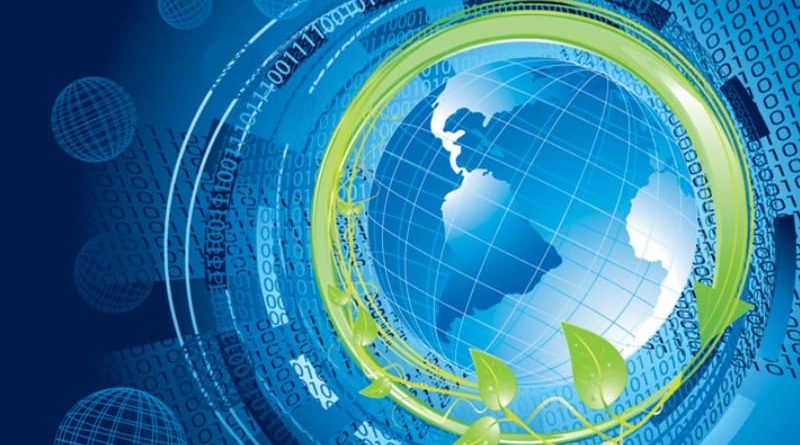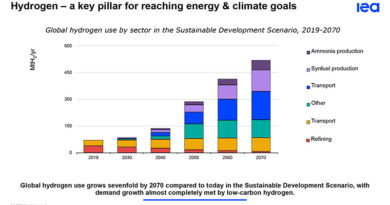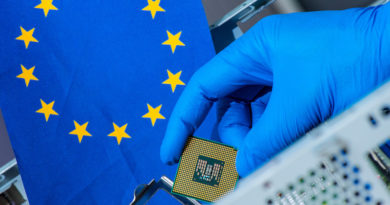
Towards a circular industrial strategy
The European Green deal is at the very heart of this legislature. Before giving birth to the expected set legislative proposals, it has already had the merit of refocusing European political debate on the real economy and its perspectives.
The European institution have set very ambitious goals committing to cut the greenhouse gas emissions at least 40% below 1990 level in ten years and make the European Union the first continent carbon-neutral by 2050.
Achieving the EU’s climate and environmental goals, however, requires a new industrial policy based on sustainability.
The European industry is an essential part of the European economy generating 24% of the GDP and employing 20% of the workforce.
Obviously, this has an impact on the environment: not only the industrial sector accounts for 20% of the EU’s emissions, but resource extraction and processing for industrial purposes also cause serious issues of water stress, biodiversity loss and industrial competitiveness.
From 1970 to 2017, the annual global extraction of materials tripled and it will not stop growing unless we undertake a structural change.
Moving from a linear model based on a “take, make and dispose” approach to a circular one aiming at maintaining the value of products, materials and resources for as long as possible, will entail to save materials and energy and prevent from introducing polluting products and substances in the environment.
Steps in this direction have already been taken at European level. In the previous legislature, policy-makers approved important pieces of legislation such as the Circular Economy package and allocated financial resources to actively encourage and promote the transition towards a circular economy.
The latest data released on circular economy are encouraging: for example, the recycling rate of municipal waste and the recycling rate of overall packaging grew from 43.5% in 2014 to 47% in 2018 and from 65.4% in 2014 to 67 in 2018, respectively.
Although it had seen an increase by 3.4 percentage points from 2004, the last data available shows that the European circularity rate amounted to 11,7% in 2016, meaning that only less than 12% of material resources used in the EU came from recycled products and recovered materials.
Evidently, this causes a significant loss of resources: for example, from 6,000 used mobiles it is possible to recover about 3.5 kilograms of silver, 340 grams of gold and 130 kilograms of copper, while recycling 10 kilograms of aluminium uses about 10% of the energy needed for primary production.
Being able to use more efficiently the resources that already are within the European market can be considerably advantageous for the European industry from several points of view.
Firstly, it can benefit the competitiveness of European industry. Despite the worldwide acknowledged high quality, security and credibility of European products, the European industry has been facing a regression, dropping 2% on monthly basis and 3,9% on annual basis in 2019.
In this context, a greater use of recovered resources can help industries to save annually €630 billion and ultimately boost their competitiveness at the international level.
Secondly, it can be a potential solution for reducing the dependence of the European Union from outside resources. Indeed, not only it relies on energy imports, but it also depend on outside sources of critical raw materials for chemical, construction and other industrial sectors, exposing European industries to prices fluctuations occurring in the international market.
The long-standing overexploitation of resources will lead soon to a situation of resource scarcity worsening this situation of vulnerability of European industry and seriously putting the European competitiveness at risk.
In addition, developing an industry based on circular economy creates new markets, new products, new jobs and value for business potentially boosting the European GDP by up to 3.9%.
Finally yet importantly, restructuring the nature of European industry will cut the carbon emission by 450 million tonnes by 2030.
In order to deliver this transformation, the paradigm shift be must be hasten. Since few years, some industries have started developing circular business models and consumers have increasingly become more sensible to environmental protection and recycling.
However, to develop an economy base on circularity, the production process as a whole must be re-designed. From product design and incentives for consumer to the creation of a market for secondary materials, everything should be efficiently optimized for closing the loop.
The European Commission will soon release a new Action Plan that is expected to undertake further steps especially in the area of product design.
This should be encompassed by a consistent and comprehensive industrial strategy adopting a long-term perspective and clearly pointing out how the European Union actually intends to support and promote this economic transition.
From digitalization of SMEs and rapid advances in technology to development of new and missing skills, it is necessary that the EC gives a clear vision.
As soon as taxonomy regulation will be approved, the European Union will have a framework fit to stimulate private investments in environmental sustainable economic activities, including waste prevention and increasing the uptake of secondary raw materials.
Although engaging private actors is important for achieving a greener growth, mobilising adequate public investment is crucial.
Indeed, fiscal incentives, investments in research, strategic infrastructures and ad hoc schemes for the re-skilling and upskilling of workers are all important factors that will lead the transition.
This is one of the reasons why the European Parliament calls for a more ambitious Multiannual Financial Framework 2021-2027 able to support the realisation of the Green new deal.
Furthermore, considering the levels of EU and Member States’ budgets, the financial needs of the transition require an open discussion on the Stability and Growth Pact.
In order to mobilize the necessary resources it is time to recognize a substantial flexibility for Member States’ sustainable investment.
In conclusion, we need to bear in mind that the decisions that we will take in this term will be decisive to determine whether the European Union will be able to achieve its climate goal by 2050.
We can succeed only by involving actively our industrial system, starting from an ambitious and more circular industrial strategy.




